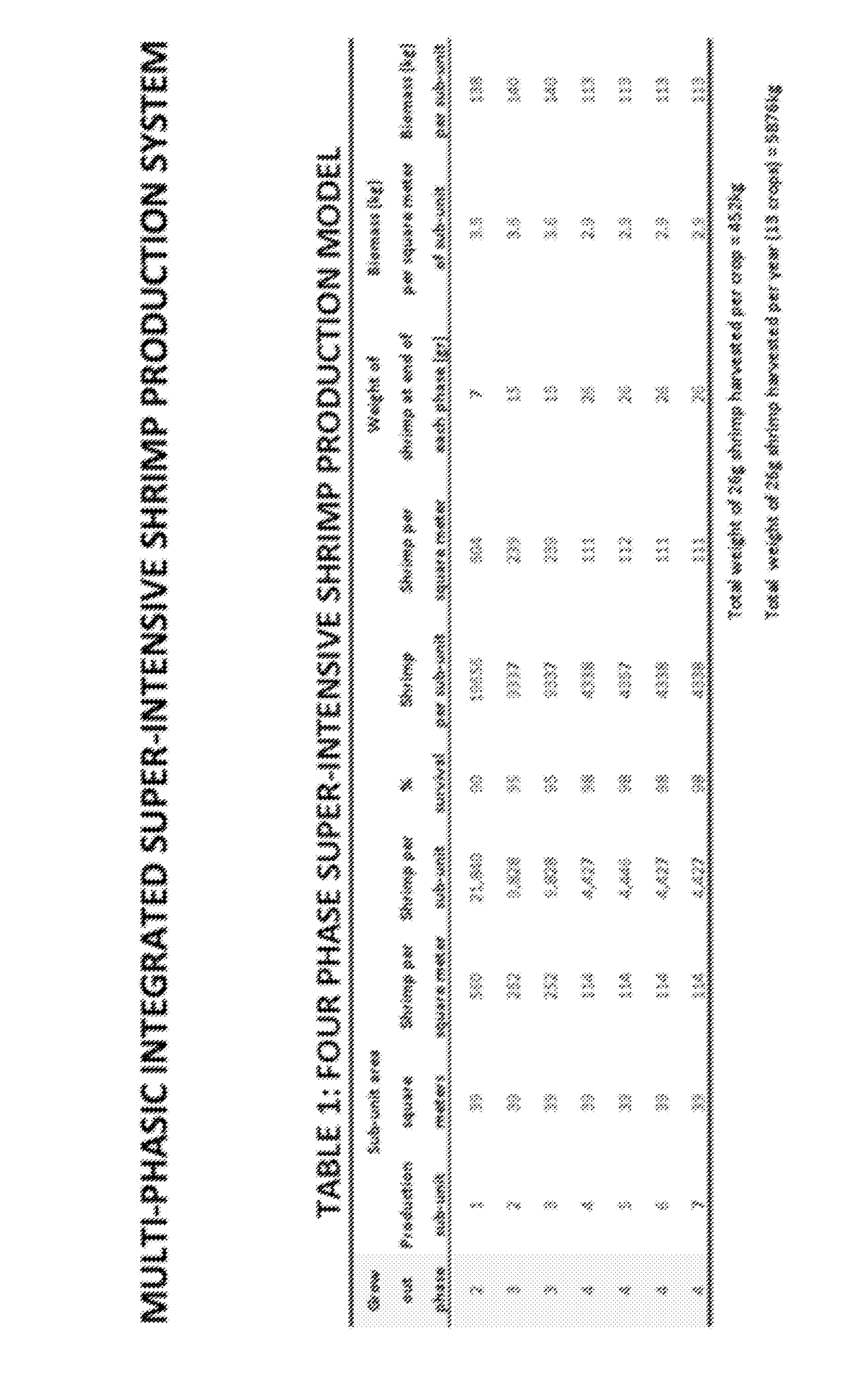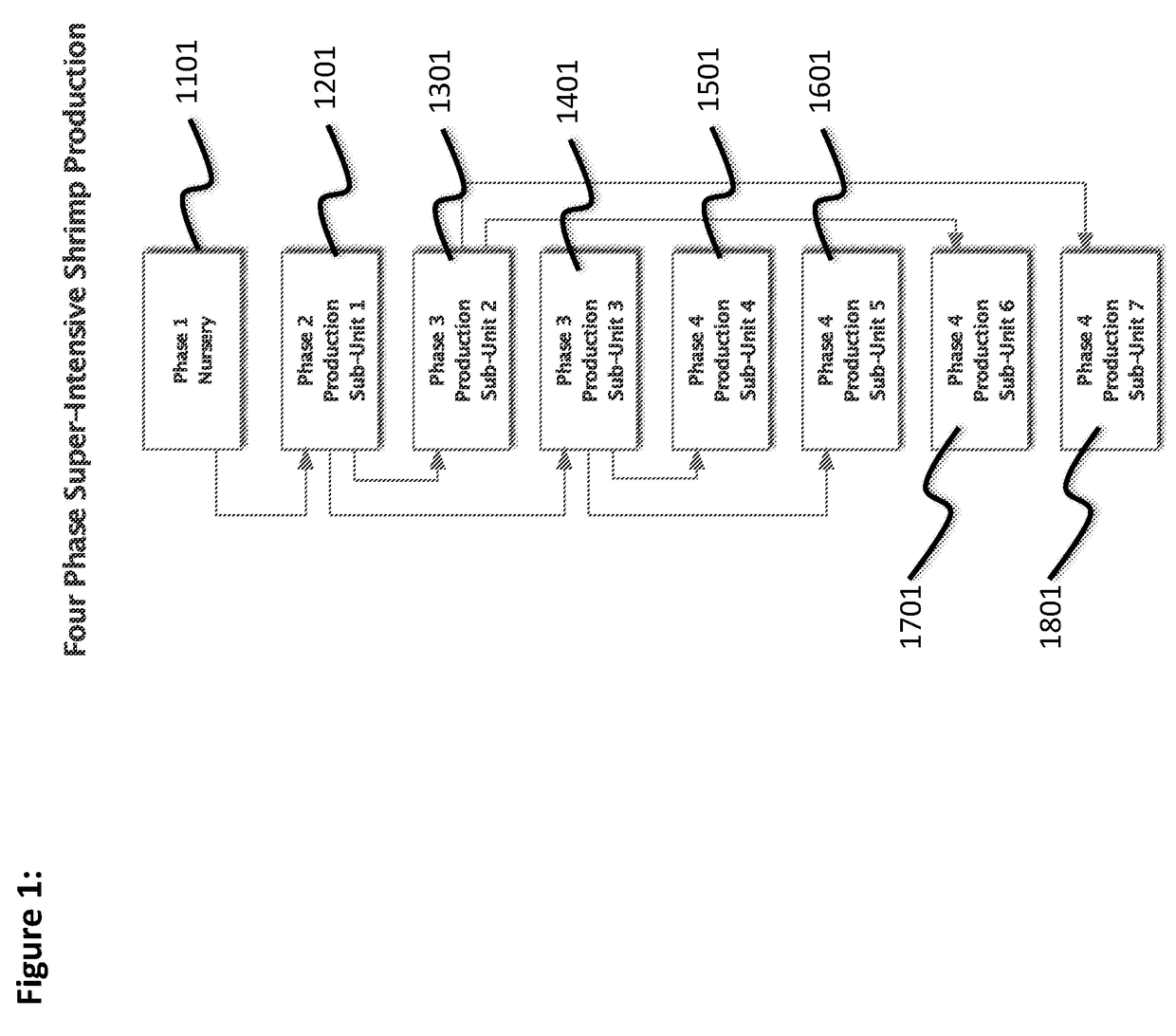Multi-phasic integrated super-intensive shrimp production system
a production system and multi-phasic technology, applied in the direction of program control, separation process, instruments, etc., can solve the problems of unsustainable world-wide shrimp production practices, growing federal trade deficit in shrimp, and inferior quality of imported shrimp to domestically grown shrimp, so as to eliminate production constraints and maximize through-put
- Summary
- Abstract
- Description
- Claims
- Application Information
AI Technical Summary
Benefits of technology
Problems solved by technology
Method used
Image
Examples
example 1
[0113]A preferred modularized shrimp production system comprises several units including:
[0114]a. a post-larvae nursery module;
[0115]b. a production sub-unit module;
[0116]c. a re-circulating aquaculture system (RAS) module;
[0117]d. a feed distribution module; and
[0118]e. a computer control module,
[0119]The basic operations of the system are modularized and integrated to form a multi-phasic synchronous super-intensive shrimp production system controlled by a custom designed cyber-physical platform that acquires data through sensors embedded in post-larvae nursery module, production sub-unit module, re-circulating aquaculture system (RAS) module, and feed distribution module that allows regulation of all aspects by Program Logic Controllers (PLCs) integrated with Human Interface Modules (HIMs) through coupled feed-back loops for maintaining an aquaculture environment for a synchronous production cycle of shrimp. The preferred post-larvae nursery module includes at least one shallow-wa...
example 2
[0129]A second embodiment of the current invention includes a method for having a synchronous production cycle of mature shrimp using a modularized shrimp production system. The preferred method comprises:[0130]a. preparing an aquaculture environment for a synchronous production cycle of shrimp;[0131]b. stocking post larvae shrimp in a post-larvae nursery module;[0132]c. raising post larvae shrimp to a juvenile stage shrimp in the post-larvae nursery module to a desired size, forming a first-phase-shrimp population;[0133]d. transferring the first-phase-shrimp to a production sub-unit rectangular-cuboid-tank;[0134]e. growing the juvenile stage shrimp in the production sub-unit rectangular-cuboid-tank for a first period of time (i.e. until the shrimp reach a desired size), forming a second phase-shrimp population;[0135]f. dividing the second-phase shrimp population into two separate production sub-unit rectangular-cuboid-tanks;[0136]g. growing the second-phase-shrimp population in eac...
PUM
| Property | Measurement | Unit |
|---|---|---|
| Temperature | aaaaa | aaaaa |
| Temperature | aaaaa | aaaaa |
| Length | aaaaa | aaaaa |
Abstract
Description
Claims
Application Information
 Login to View More
Login to View More - R&D
- Intellectual Property
- Life Sciences
- Materials
- Tech Scout
- Unparalleled Data Quality
- Higher Quality Content
- 60% Fewer Hallucinations
Browse by: Latest US Patents, China's latest patents, Technical Efficacy Thesaurus, Application Domain, Technology Topic, Popular Technical Reports.
© 2025 PatSnap. All rights reserved.Legal|Privacy policy|Modern Slavery Act Transparency Statement|Sitemap|About US| Contact US: help@patsnap.com



